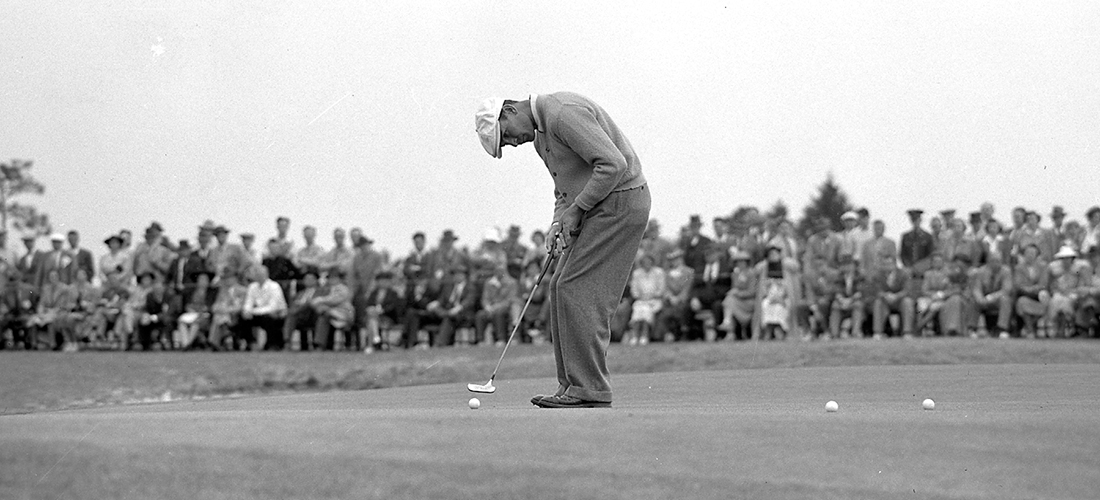
Whether capturing images of golf or war, no one did it better than Pinehurst photographer John Hemmer
By Bill Case
The grammar school dropout was forever on the move. There were times he bolted into the darkroom of his employer’s photographic studio to hide from an approaching truant officer. More often, the errand boy ran pell-mell to the offices of New York City newspapers and magazines, lugging a pouch stuffed with the newsy photographs of the day snapped by the studio’s owner, Edwin Levick, and his seven assistant photographers.
The success of Levick’s photographic services business depended on speed. The first good images of a newsworthy event to reach the syndicated media were the ones most likely to be published, and pay off. So, Brooklyn-reared John Hemmer — the dropout, the errand boy — learned long before he clicked his first shutter that, in the photography trade, there was no substitute for being in the right place at the right time.
In 1910, when Hemmer was just 18, one of Levick’s assistant photographers incorrectly loaded the powder in the flash lamp of one of the cameras. The magnesium powder could be nasty stuff. Careless photographers were known to set rooms, or even themselves, on fire. The resulting explosion singed the face of a supervisor, who fired the assistant on the spot. Hemmer was standing nearby. The agitated boss thrust the camera at the teenager and commanded, “Get some pictures, Hemmer!” He didn’t stop for 60 years.
With a working knowledge of photography gained from Levick, a transplanted Englishman, and his agency’s other cameramen, Hemmer raced around New York again, but this time with cameras and equipment in tow instead of a satchel. Like Mozart to music, he took to the work immediately. The cutthroat world of syndicated photography wasn’t for the timid. Veteran competitors told him to “get lost,” but the feisty Hemmer couldn’t be bullied. “If I didn’t fight back, or think up new tricks, I went back without any pictures, and that was a sure way to get fired,” he said later. His determination was fueled by an innate self-confidence. Hemmer told The Pilot’s Mary Evelyn de Nissoff that, during his New York days, when he arose each morning, he “felt like shouting from the housetop, ‘I’m John Hemmer!’”
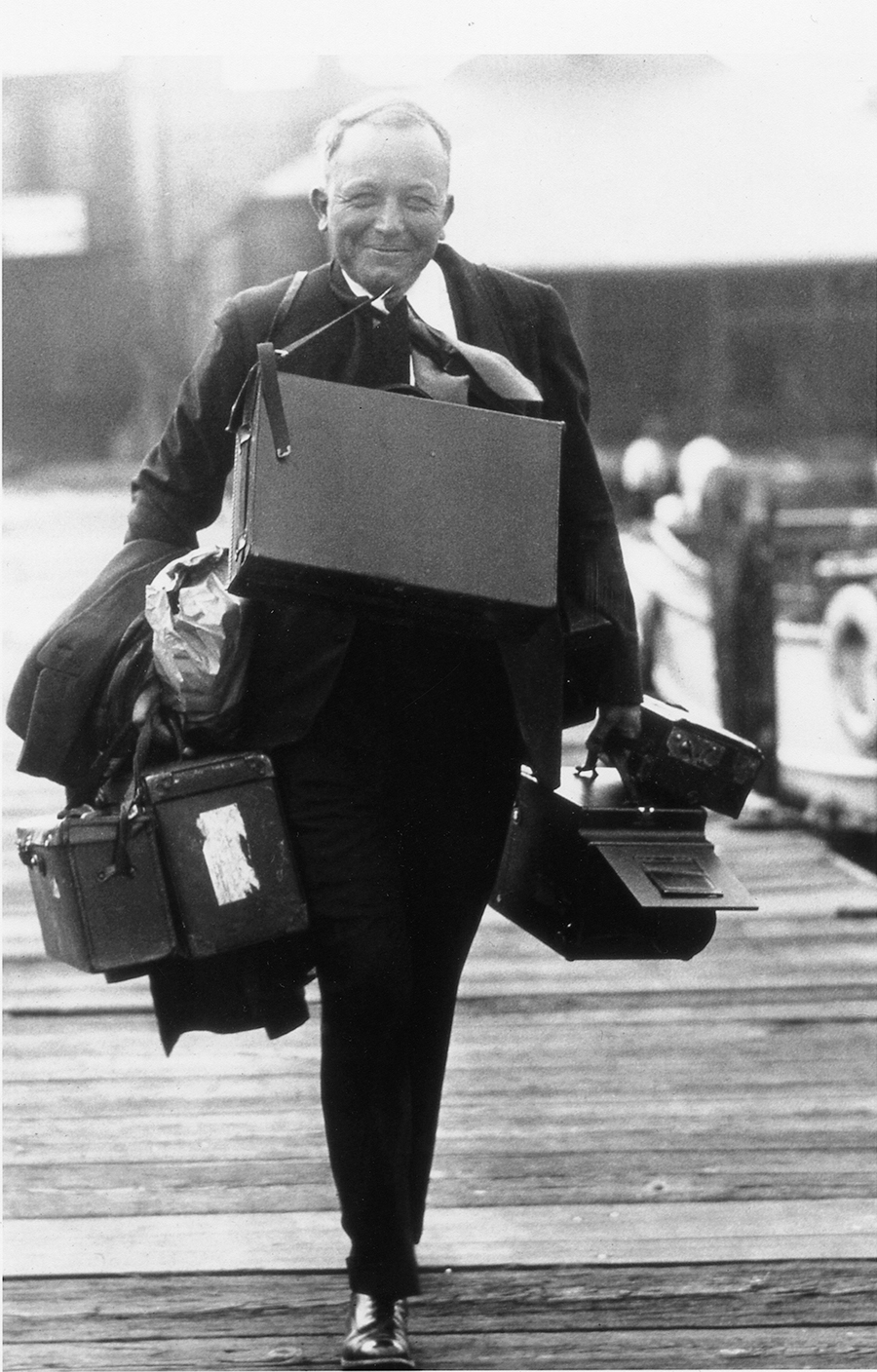
The sharp-elbowed photographers were forever conjuring up new methods to scoop one another. Hemmer recalled the novel way his well-heeled competitors from Hearst Publications covered the arrival of major ships. “The Hearst boys started using carrier pigeons to relay their film from the press boat back to the city, and their pictures were usually in print by the time the rest of us got back to the dock,” Hemmer said. The system, however, had its flaws. There were times, Hemmer chuckled, when the pigeons “circled the ship and lit on the mast.”
As the agency’s junior photographer, Hemmer was often sent to what Levick, a premier maritime photographer, considered secondary assignments. One was golf — a sport barely out of its infancy in America. Hemmer’s first tournament was the 1911 U.S. Amateur, held at the Apawamis Club in Rye, New York. His golf photos were barely noticed until the 1913 U. S. Open at The Country Club in Brookline, Massachusetts. The routine assignment became a godsend when a 20-year-old amateur and former caddie at the host club, Francis Ouimet, emerged the winner. Ouimet’s unlikely playoff upset over the British duo of Ted Ray and the incomparable Harry Vardon, written about some 90 years later in the book The Greatest Game Ever Played, jump-started more than just golf in America — it jump-started John Hemmer, too. His photographs of Ouimet’s victory at Brookline were in high demand. Suddenly, Hemmer found himself catapulted into the upper ranks of the game’s photographers.
When an important golf tournament popped up on the schedule, Levick would turn to Hemmer. In the early days, Hemmer and his fellow shutterbugs seldom strayed from the clubhouse until the players finished their rounds. The winners lined up for pictures. “No one had ever thought of going out on the course until one day I got interested in seeing what I could photograph out there,” Hemmer recalled. He began lugging his bulky gear, 60 pounds or more, onto the course to capture images of key shots, revolutionizing tournament photography. Respected by his colleagues, Hemmer became the first president of the New York Press Photographers Association.
Though the German-Irish kid from Flatbush had an expertise in sports photography, he swore off baseball after an unnerving experience at the Polo Grounds. Hemmer was in the process of shooting the Giants’ star pitcher (and future Hall of Famer), Rube Marquard, warming up on the sidelines. Suddenly Marquard fired a fastball that whizzed close by the photographer’s head. “Don’t you ever take my picture again!” warned the irate southpaw, who harbored a superstition, shared by many of the era’s ballplayers, that photography constituted a sort of black art that could bring ill to those who consented to have their picture taken.
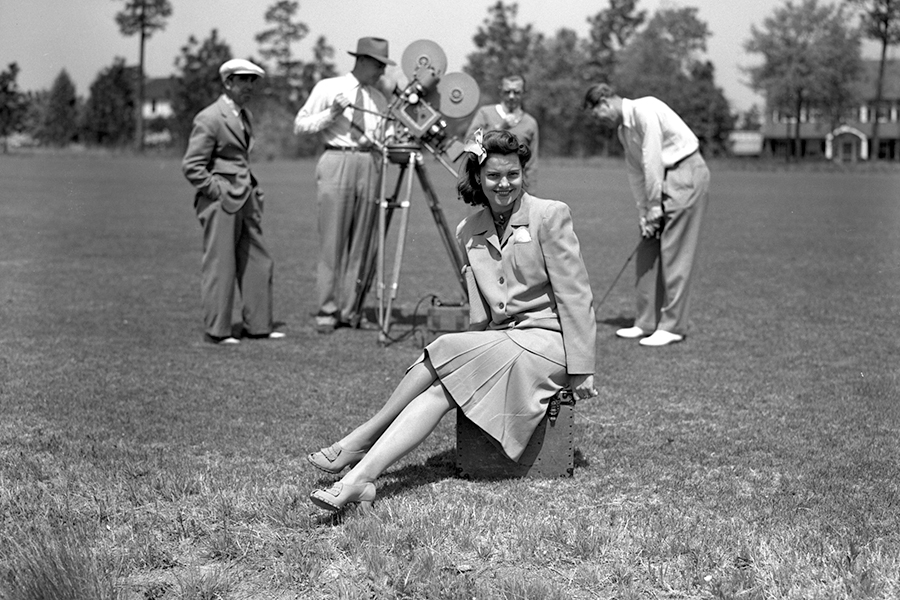
Hemmer married Anna Flynn in 1918, just prior to serving in World War I as a Signal Corps cameraman attached to the American Expeditionary Force Siberia. This forgotten theater of “The Great War” involved the efforts of 7,950 Army officers and enlisted men to protect the equipment and supplies the United States had sent to the Tsarist regime from being seized by the Bolsheviks. The Expedition also assisted the Czechoslovak Legion in its evacuation from Russia. By all accounts, Siberia’s bleak tundra made for a miserable posting as the freezing soldiers continually faced shortages of food and supplies. Hemmer experienced a harrowing encounter crossing Siberia by railroad: “The train broke down. It was 60 below outside,” he recalled. “I tried to go out and make pictures of the train in the snow, but I couldn’t. The wolves wouldn’t let me off the train.” Hemmer managed to emerge from his war service unscathed, and in 1919, returned to his New York job with Levick. In 1923, John and Anna celebrated the birth of their son, John L. Hemmer.
In July, 1924, following the death of Pinehurst photographer Edmund Merrow, Richard Tufts approached Levick in search of a photographer for the resort’s Mid-South golf tournament, to be held in late October. Tufts also needed a man for a number of Pinehurst events scheduled for March. Levick agreed to provide a cameraman for both, then failed to produce one in October. A disappointed Tufts wrote that the no-show for the Mid-South breached “very definite arrangements.” Levick cavalierly dismissed the blown assignment as being not worth the trouble. “It would have to be more tangible than just a single tournament to justify even an assistant at Pinehurst,” he responded.
While Tufts may have seethed at the offhand treatment, Levick nonetheless possessed working relationships with all of the Eastern newspapers. Tufts decided to let the agency cover Pinehurst’s March 1925 events as planned. On March 23rd, Levick advised the resort owner that his selected assistant was on route to Pinehurst, assuring him, “My assistant, John Hemmer, who will cover the assignment, knows golf thoroughly and has been with us now some sixteen or seventeen years.”
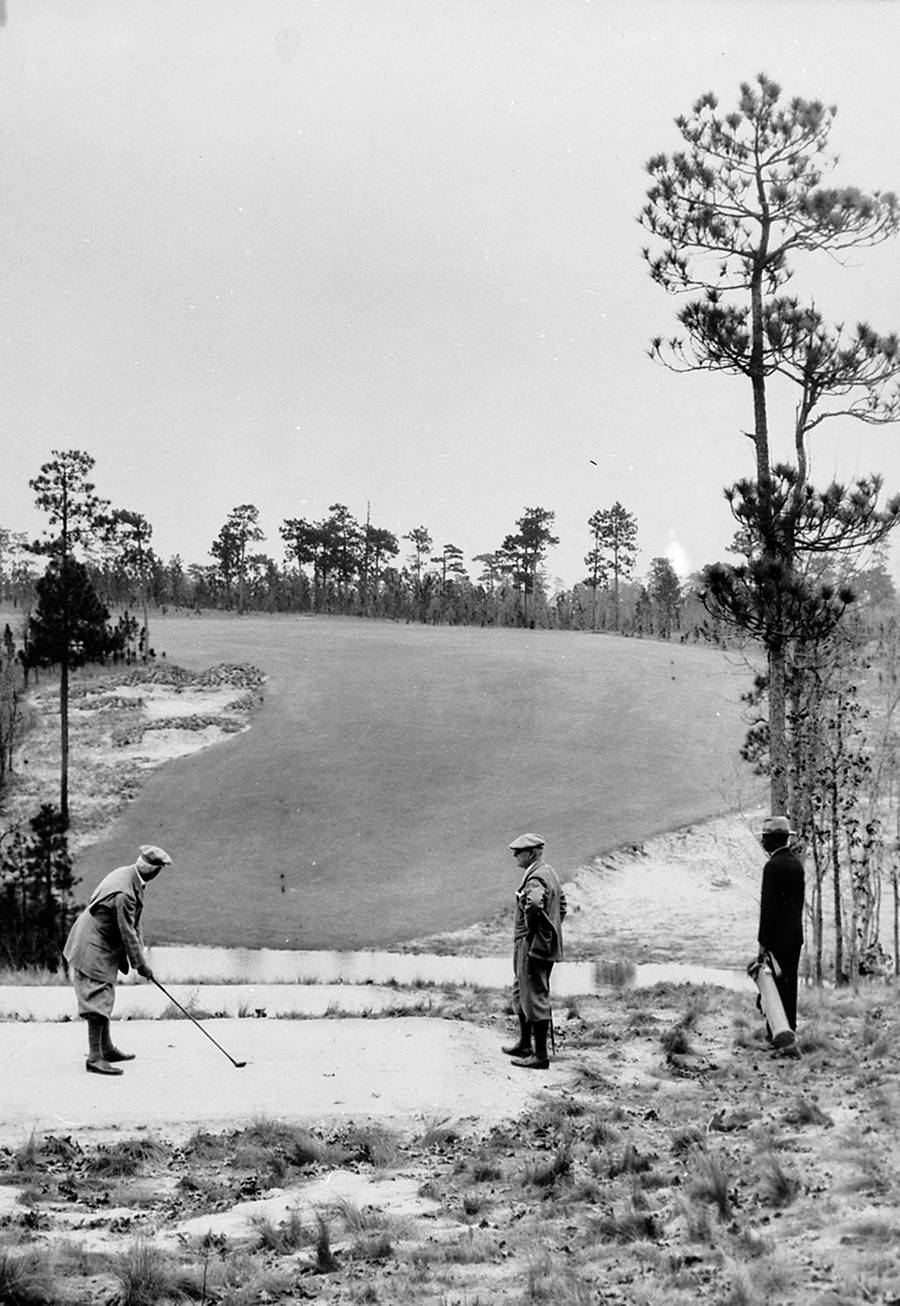
Four days after Hemmer’s arrival, Tufts wrote Levick. “We are very favorably impressed by him [Hemmer] and are looking forward to good results from his work here.” Though Hemmer’s first stint in Pinehurst was brief, it was long enough for the buttoned-up Tufts to conclude that he wanted the New Yorker back. Always on time, nattily attired in dark suit, white shirt, vest and tie, and attentive to Tufts’ desire that photos be promptly forwarded to resort guests’ hometown newspapers, Hemmer quickly ingratiated himself with the boss. The guests liked him, too. Easygoing behind the camera, Hemmer’s mugging and quips never failed to bring a smile to those he was photographing. And Levick promised Tufts that his assistant’s Pinehurst pictures would be displayed in even more newspapers the following season.
By July 1925, Tufts was inclined to cut out the middleman. He suggested to Hemmer, “if you feel you are in position yourself to give us good publicity we might be interested in making arrangements with you rather than Mr. Levick on somewhat the same basis.” He also suggested that Hemmer consider spending the entire winter season (October to May) in Pinehurst, promising that he and connected persons in the community could funnel plenty of business his way.
Enchanted by Pinehurst, Hemmer leaped at the offer. He advised Tufts that he was making arrangements with a firm to place Pinehurst photos “not only in the metropolitan papers, but all through the east, west, north, and south.” Soon, John, Anna and John Jr. were snugly housed in Pinehurst’s Laurel Cottage, where the Given Outpost is now — the cottage was razed in 1934 to make way for Pinehurst’s post office. He opened “Hemmer’s Photo Shop,” initially in the Harvard Building, thereafter at the Carolina Hotel.
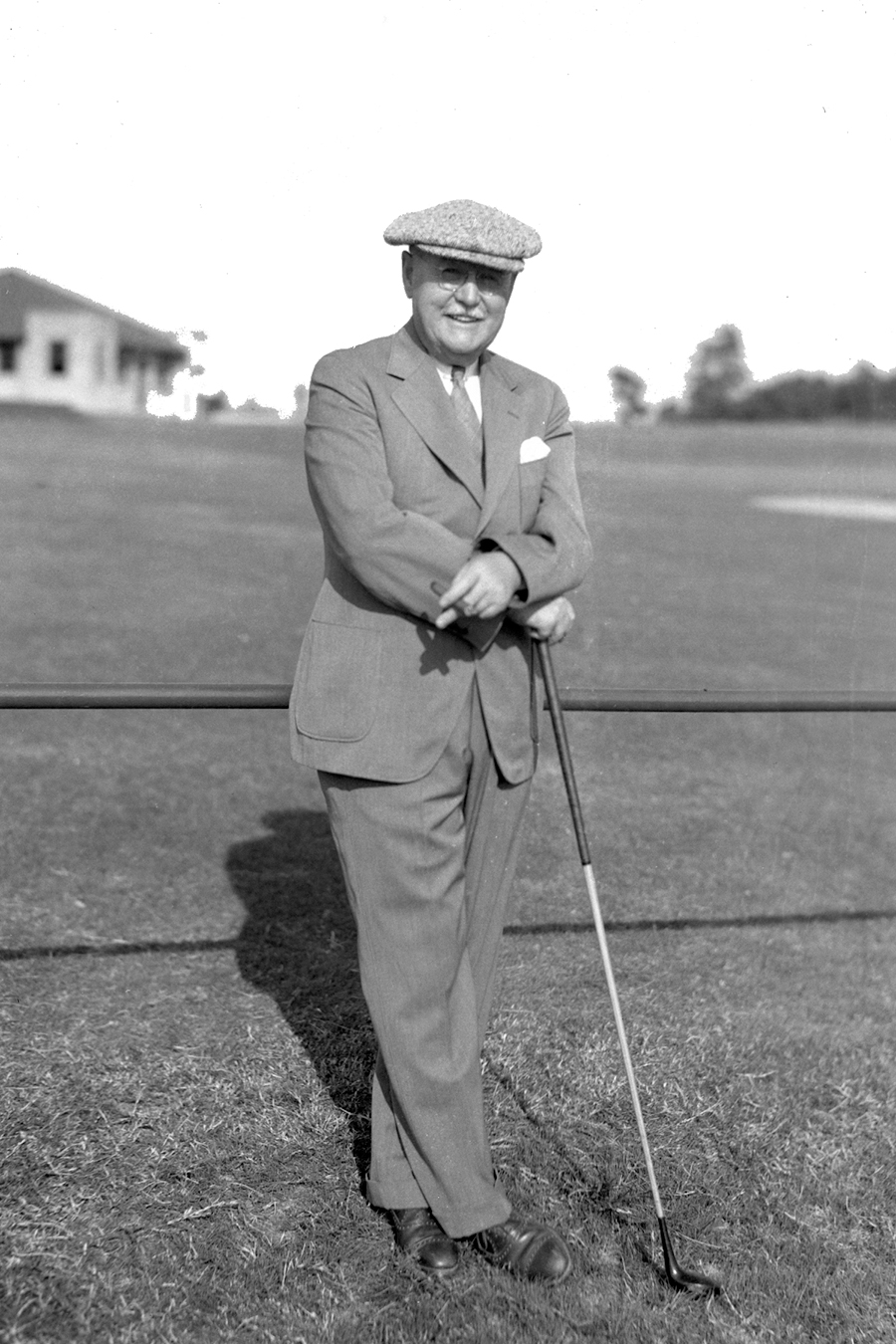
The diversity of Pinehurst, Inc.’s activities afforded Hemmer a wide variety of subjects for his lens. Photographing sporting activities like golf (particularly the North and South tournaments), shooting at the gun club, tennis, gymkhanas and horse racing constituted the bulk of his work. Hemmer took a raft of publicity pictures at the Tufts’ brand new golf course at Pine Needles, including several of Donald Ross hitting shots. The many celebrities that found their way to Pinehurst couldn’t leave town without posing for Hemmer. Images of the Tufts’ agricultural operations, like the piggery and the farm’s cattle, were snapped by Hemmer’s all-seeing camera. Leonard Tufts (Richard’s father), proud of his renowned Ayrshire cattle breeding operation, even suggested to the photographer that if famous people like Will Rogers or Gloria Swanson were in residence, “you should get a picture of them milking the old cow” — Leonard’s prized Ayrshire he lovingly named Tootsy Mitchell.
Hemmer also created a remarkable series of photographs featuring Pinehurst’s African-American caddies. Colorful loopers with sobriquets like “Dr. Buzzard,” “Hog Eye,” “Calvin Coolidge” and “Dr. Hawk” captured by his weather-beaten camera make up a collection of images that ranks among the Tufts Archives’ most cherished. Hemmer’s horseracing photos drew particular admiration given his uncanny ability to snap galloping steeds with all four hooves airborne. Hemmer also arranged for his Pinehurst photographs to be transformed into postcards. The dissemination of the hand-colored cards, designed to portray Pinehurst’s peaceful and idyllic atmosphere, provided an invaluable boon to the resort’s promotional efforts.
A February 1926 article in The Pilot gushed, “Mr. Hemmer . . . has beaten all previous records for the number of Pinehurst pictures published during a season. Every real newsstand in America puts out some paper every day exhibiting specimens of Mr. Hemmer’s art and genius. He is giving this section the highest type of publicity it has ever enjoyed.”
During summers, Hemmer would return to New York, where he continued the hunt for newsworthy subjects. He found a good one on a cloudy morning in May, 1927 at New York’s Roosevelt Field, where a sandy-haired Midwestern pilot named Charles Lindbergh was preparing to take off in his daunting attempt to make the first aerial crossing of the Atlantic. Learning that Lindbergh had completely exhausted his funds in preparing for the epic flight, a sympathetic Hemmer passed the hat among the assembled media types in order to scrape together sufficient cash to buy sandwiches and a thermos of coffee for the young flyer’s journey.
Much like Forrest Gump, Hemmer seemed to always be on hand, playing a contributing role at historically important events. His timing was once again impeccable at the 1930 U.S. Amateur at Merion Golf Club where Bobby Jones’ 8 and 7 victory over Eugene Homans provided the last of his four major championship victories that year. Later Hemmer would say that photographing Jones’ Grand Slam was his greatest thrill.
In Pinehurst, Hemmer immersed himself in civic activities. He became commander of the local American Legion post and a director of the Chamber of Commerce. Though never a golfer himself, Hemmer did gain a reputation as a crack gin rummy player and inveterate hunter of arrowheads. After Laurel Cottage was razed, Hemmer moved his family across the street to Cherokee Cottage (behind the Theatre Building and now the site of the Maples Building). Hemmer’s reputation continued to grow. Bob Harlow, American golf’s greatest promoter, and the founder and publisher of Golf World magazine, would write in 1938, “John Hemmer is the best newspaper photographer in America, and has been for a number of years. He has the rare combination of being a great artist with the camera, a fine judge of news values in what the editors of the tabloids call the ‘pix,’ and he can write captions with any headline scribe and hold his own.”
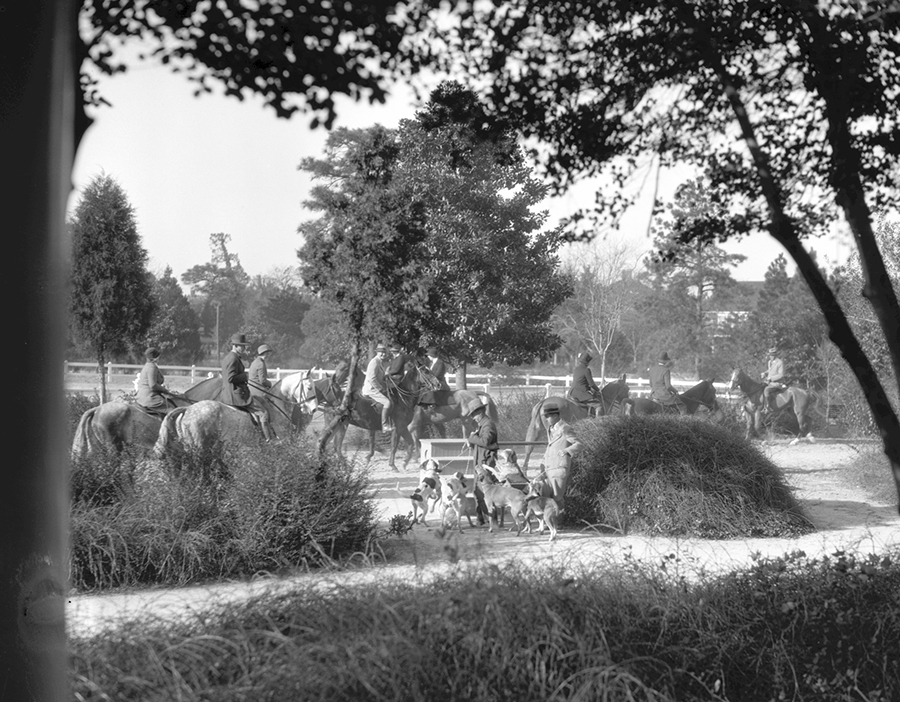
Why Hemmer decided to curtail his work in Pinehurst and join the New York Daily News prior to World War II is something of a mystery. Hemmer adored Pinehurst and had become a fixture in the community. With the Great Depression not yet in America’s rear view mirror, a slowdown in business at the resort may have been a factor. Maybe he missed the bustle of the big city, or perhaps the Daily News offered financial terms Hemmer couldn’t refuse. In any event, he kept a foothold in Pinehurst, visiting often and taking an occasional assignment. He also retained ownership of the Hemmer Photo Shop, placing talented 34-year-old Emerson Humphrey in charge of operations.
Whatever his reasons, Hemmer’s return to New York made for the most exciting period of his career. Once World War II began in earnest, he was frequently aloft, miles out over the Atlantic, in the Daily News’ single-engine airplane, snapping photographs of ships burning, listing or sinking from the deadly effects of U-boat torpedoes. The newspaper, Hemmer mused, “never sent us out unless the weather was terrible.”
In his efforts to obtain front page-worthy photos, Hemmer sometimes went too far. He often encouraged the pilot of the Daily News’ craft to repeatedly circle a wrecked ship for “just one more shot.” Invariably running low on fuel, on one occasion the pilot was forced to ditch the plane in the ocean. Photographer and pilot were safely rescued, and Hemmer somehow managed to keep his speed-graphic camera and plates dry. Pushing the envelope brought Hemmer and the Daily News trouble when the paper published a 1941 aerial photograph of a war-damaged British battleship limping into New York’s harbor, raising the ire of an incensed secretary of the Navy, who felt wartime censorship regulations had been violated.
Sometimes his risk-taking resulted in memorable images of the war. His aerial shot of the British vessel King George V’s, arrival (with British ambassador to the United States Lord Halifax aboard) in the Chesapeake Bay won Hemmer the “Best Photographic Award” of 1941. Wendell Willkie, the recently defeated Republican candidate for president, presented the award.
Missing “sand in his shoes,” Hemmer returned to the tranquility of Pinehurst in 1944, residing full-time at Cherokee Cottage. Emerson Humphrey moved on, opening a photo shop in Southern Pines, and Hemmer relocated his studio to an outbuilding adjacent to his cottage.
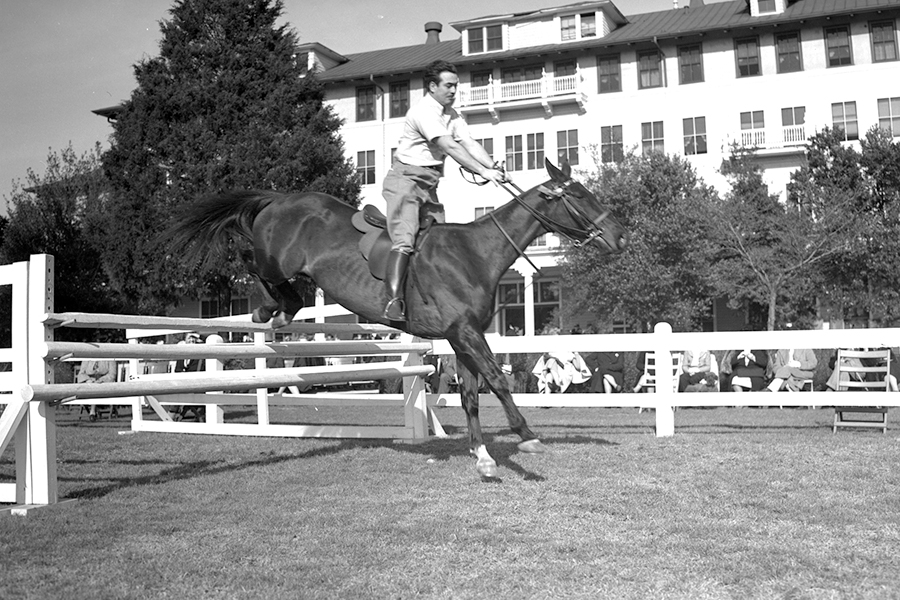
Dividing his time between performing his usual photography work in Pinehurst and new employment with North Carolina’s State Conservation and Development organization in Raleigh, Hemmer became the official photographer for the state. For half of the year, he would blitz North Carolina, “from Manteo to Murphy,” as he put it, taking promotional photos. “We made some enemies along the way,” he would later admit, “because if the weather happened to be bad so that we couldn’t take color pictures in a certain place, we had to move along to the next place anyway.” His award-winning work continued to bring Hemmer into contact with notable personalities. Covering the theatrical production of The Lost Colony on the Outer Banks, Hemmer snapped several photos of the tall, amiable young man playing the role of Sir Walter Raleigh — a little-known actor named Andy Griffith.
His promotional pictures of North Carolina appeared in newspapers and magazines throughout America. Son John Jr., who followed in his father’s footsteps by becoming the photo editor of the Tucson Citizen newspaper, said his father effectively became the state’s ambassador, and that he “lived and breathed North Carolina.”
But golf photography remained the go-to staple of Hemmer’s work. Raleigh News & Observer reporter Joe Holloway said, “The eyes belonging to Johnny Hemmer have focused cameras on more golfers than any eyes in the world.” Golf World’s Harlow turned the camera around on Hemmer, making him the cover boy of a 1951 edition of the magazine.
Throughout the ’50s and ’60s, Hemmer was every bit as much a fixture in Pinehurst as the Putter Boy statue. He made friends with another generation of Pinehurst residents, including Gen. George C. Marshall. Lifetime Pinehurst resident Nancy Smith participated in equestrian events in her youth and was a target of the veteran cameraman’s lens, especially at the Sunday gymkhana events held adjacent to the Carolina Hotel. “I think of him with a smile on his face,” recollects Smith.
His outward affability masked pain, both physical and psychic. Wife Anna died in 1960, and Hemmer remained a widower the rest of his life. While in New Jersey, photographing the 1961 transfer of the U.S. Battleship North Carolina from the United States to the state of North Carolina, Hemmer fell off of a raised platform and was laid up for weeks after severely damaging his side, and breaking several bones. In another mishap, he was kicked in the leg and face by a thundering thoroughbred in an effort to rescue a fellow photographer who had meandered onto the track in the midst of a steeplechase race. The accident accentuated the deterioration of Hemmer’s vision, a problem that gradually increased in severity as the ’60s unfolded.
Though slowing in his 70s, Hemmer remained the resort’s go-to photographer. Requiring assistance in his photo shop, he hired a 14-year-old Pinehurst High School schoolboy, Don McKenzie, in 1966 to help out after school. Laboring in Hemmer’s darkroom, pasting captions onto photos, escorting his mentor to the Southern Pines’ railroad station to arrange for shipment of photos to Northern newspapers, and toting battered equipment to assignments, McKenzie absorbed much about the photography business.
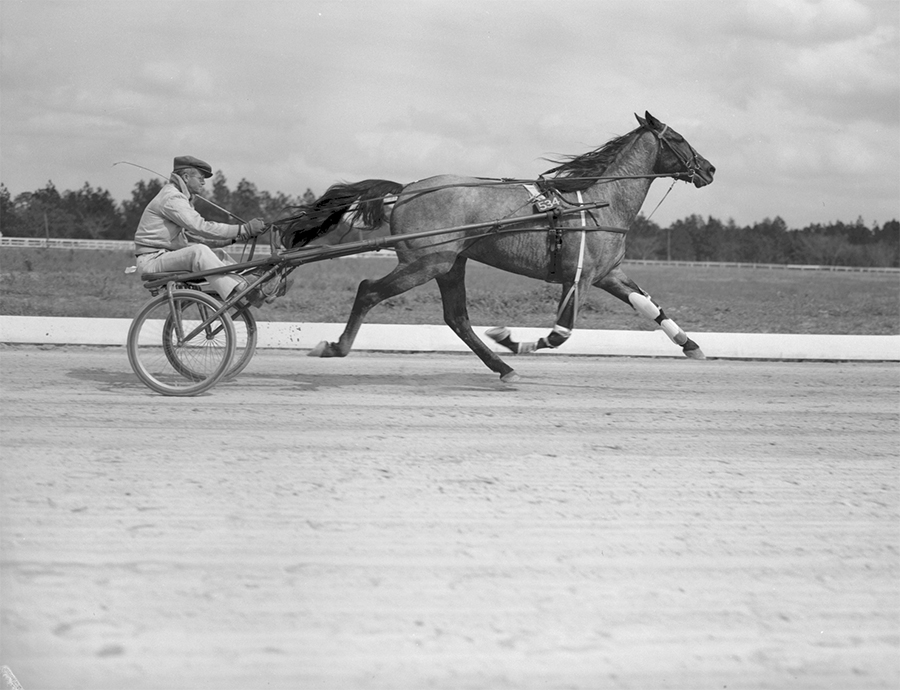
And though young McKenzie had yet to take a picture, he learned about photographic composition by observing his boss taking golf course photos at the Pinehurst resort. “Mr. Hemmer was the only one allowed to drive his car on the courses, and I would go with him to help set up,” McKenzie remembers. “When he took golf course pictures, he usually had something in the foreground, like a tree limb, then a middle ground — usually the subject of the picture — then something that caught your eye in the background, maybe the clubhouse.”
McKenzie also marveled at the veteran cameraman’s ability to take great pictures with out-of-date equipment. One ancient camera had reached a stage where it was letting unwanted light into the picture frame. Rather than purchase a replacement, McKenzie says, “Mr. Hemmer simply taped over the opening where the light was coming in and the camera worked just fine.” McKenzie’s experience with Hemmer helped inspire him to embark on his own lifelong photographic career in Southern Pines.
Despite the loss of acuity in his sight, Hemmer kept taking pictures throughout the ’60s. But it became a losing battle. Blindness was rapidly approaching. Around the time that the Tufts family sold the resort to the Diamondhead Corporation (1970), Hemmer snapped his final picture, ending a 45-year association with Richard Tufts and Pinehurst, Inc. For a while, Hemmer was able to remain in his Cherokee Lodge home. Longtime Pinehurst resident Bonnie Mosbrook recalls him in dark glasses waving his white cane high over his head to alert approaching motorists that he was intending to walk across a village intersection.
Failing health forced Hemmer into the Sandhills Nursing Center in December 1973. His son arranged for the sale of Cherokee Lodge in March of 1974. Less than two months later, the home was destroyed by fire. His former photography studio was salvaged, though it, too, was eventually razed. Though no longer part of the action in Pinehurst, he was far from forgotten and a stream of tributes flowed his way. When the World Golf Hall of Fame was established in Pinehurst, its photo room was named the “John Hemmer Gallery.” A Hemmer trophy for the year’s best golf picture by a news photographer was also instituted. On his 85th birthday in 1977, the Given Memorial Library’s Tufts Archives arranged a “Hemmer Exhibit” of his photos.
After five years in the nursing home, Hemmer’s funds were exhausted. Friend and legendary fellow North Carolina photographer, Hugh Morton. rushed to his rescue, organizing a fund so that Hemmer could meet his expenses. Among those chipping in were Gov. Terry Sanford, Andy Griffith, and the White House News Photographers.
John Hemmer passed away on October 6, 1981, at age 89 but, housed in the Tufts Archives, 85,000 of his photographs can still see the light of day. PS
Pinehurst resident Bill Case is PineStraw’s history man. He can be reached at Bill.Case@thompsonhine.com.





